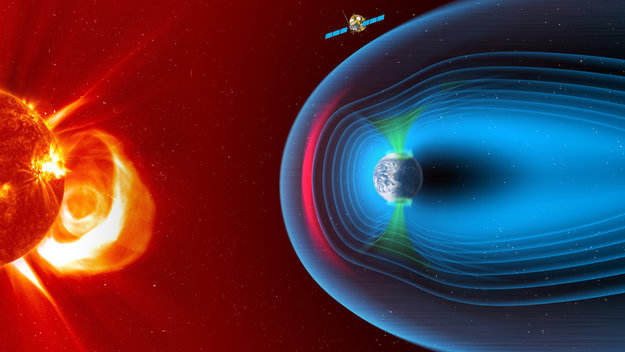The European Space Agency has given the green light for a mission to explore the Sun-Earth connection in collaboration with China.
The Science Programme Committee of the European Space Agency (ESA) has given the green light for implementation of the Solar wind Magnetosphere Ionosphere Link Explorer (Smile) mission. The announcement clears the way for full development of this mission to explore the Sun-Earth connection, which will be conducted in collaboration with China.
Smile is expected to revolutionise scientists’ understanding of the physical processes taking place during the continuous interaction between particles in the solar wind and Earth’s magnetic shield – the magnetosphere.
The mission will be a major scientific endeavour in collaboration between ESA and China, following on from the success of the Double Star / Tan Ce mission which flew between 2003 and 2008. Unlike Double Star, which started out as a China-only project, Smile is envisaged from the start as a joint ESA-China mission.
Under current plans, the 2,200kg spacecraft will be launched by a European Vega-C rocket or Ariane 6-2 in 2023, and subsequently be placed in a highly inclined elliptical orbit around Earth. Every 51 hours, Smile will fly out to 121,000km, giving it a prolonged view of Earth’s northern polar regions. It will then return to within 5,000km of the planet in order to download data to an ESA ground station in Antarctica and the CAS ground station in Sanya, China.
The science payload consists of four instruments: two from Europe and Canada, and two from China. The innovative wide-field Soft X-ray Imager (SXI), provided by the United Kingdom Space Agency and other European institutions, will obtain unique measurements of the regions where the solar wind impacts the magnetosphere. The Canada-led Ultra-Violet Imager (UVI) will study global distribution of the auroras. The two Chinese instruments, the Light Ion Analyser (LIA) and Magnetometer (MAG), will measure the energetic particles in the solar wind and changes in the local magnetic field.
Design study contracts for the Smile payload module were awarded in September 2017.

